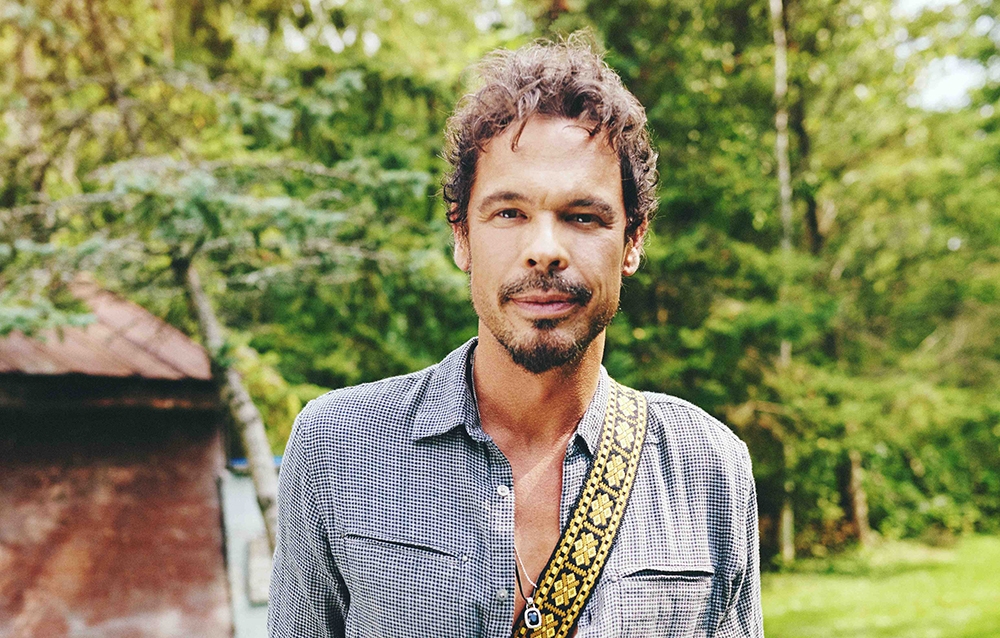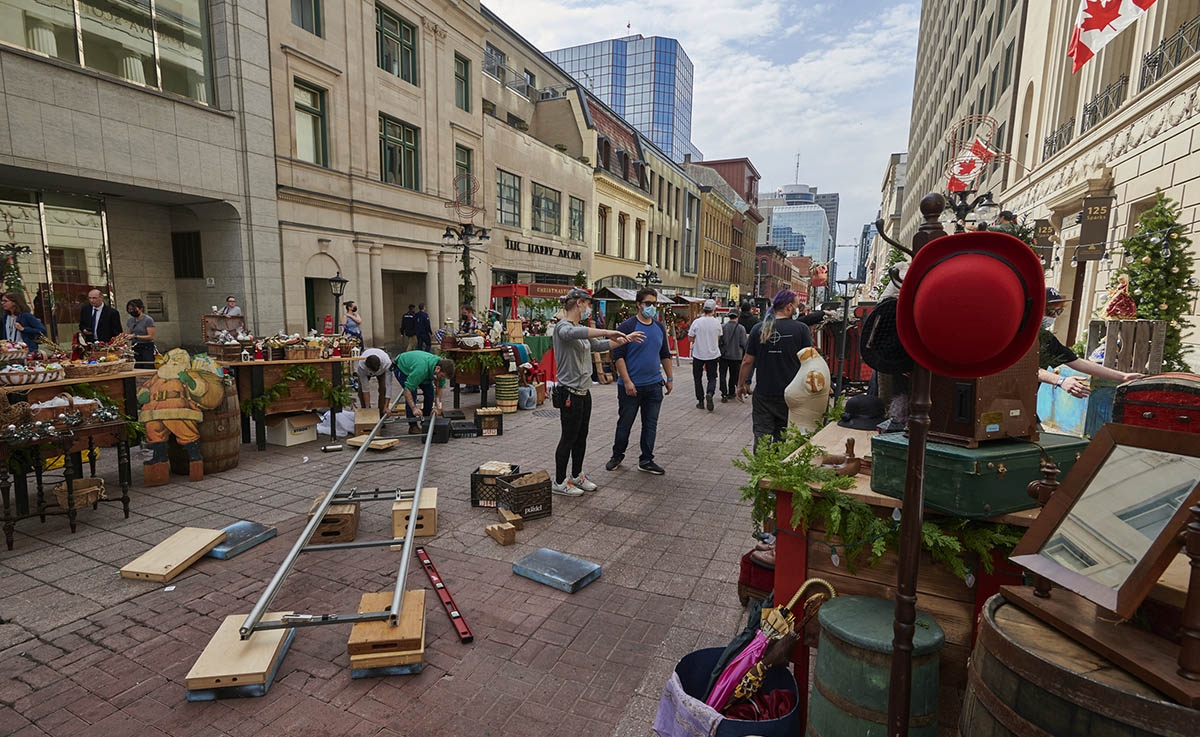
Ottawa’s push to become the next Hollywood North
ABOVE: Movie set on Sparks Street in Ottawa. Photo: Albert Camicioli, Ottawa Film Ofice
By Boshko Maric
“To save his declining business, Chris Cringle, also known as Santa Claus, is forced into a partnership with the U.S. military. Making matters worse, Chris gets locked into a deadly battle of wits against a highly skilled assassin, hired by a precocious 12-year-old, after receiving a lump of coal in his stocking.”
This is the IMDB summary for the plot of Fatman, a 2020 thriller-Christmas movie that stars Mel Gibson as a ruthless and jaded Santa Claus, in what might be the most fitting role of his career.
Most of the movie is set in a small Alaskan town; however, almost the entire film was shot in the Ottawa Valley, according to IMDB. Fatman is just one of the dozens of live-action films shot in Ottawa over the last three years, as a growing number of filmmakers and producers look to the nation’s capital for their next project.
According to the Ottawa Film Office (OFO), a non-profit, municipally-funded organization that works to support and grow the local film industry, spending on live action productions in the city reached almost $50 million by the third quarter of 2022, which marked a 60 per cent increase from 2019, before the pandemic struck. The film, TV and animation industry has become a major economic force in Ottawa, contributing an average of $100 million to the city’s economy each year, according to the OFO. In 2022 alone, more than 40 live-action productions were filmed in Ottawa, the OFO said.
Lured by a comparatively weak Canadian dollar and generous tax incentives, U.S. film and TV producers have been flocking to large metropolises such as Vancouver and Toronto to shoot their projects for many years. But lately, the nation’s capital has seen a significant increase in live-action productions, and has plans to develop the city’s film industry even further. Will Ottawa soon join the bid for the title of “Hollywood North”?
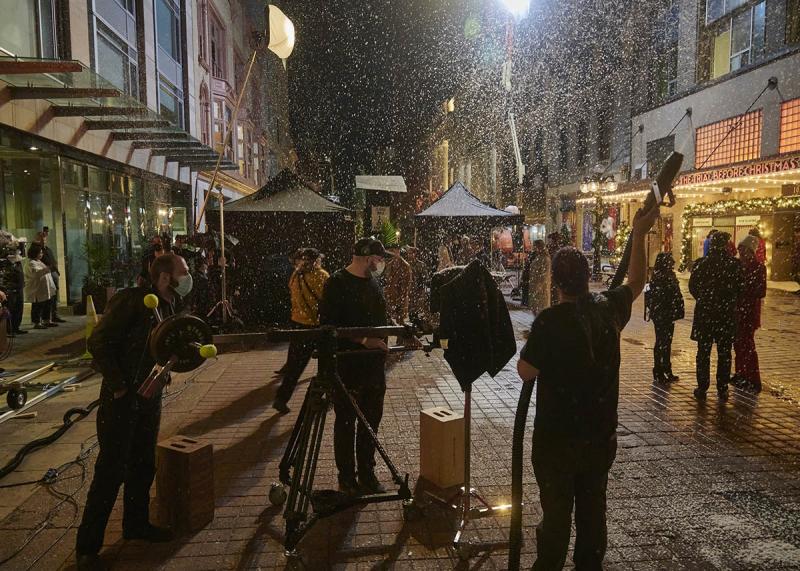
Ottawa has already developed a reputation as a hotbed for animated productions, and hosts the largest animation festival in North America, but Sandrine Pechels de Saint Sardos, the film commissioner for the OFO, believes that the city has enormous potential for live-action productions.
Pechels de Saint Sardos, who is originally from Paris, has spent her entire career in the film industry, working in various administrative roles. She has worked in New York, Los Angeles, Montreal and most recently, Toronto, but decided to move to the nation’s capital when she was offered the OFO job just over six months ago.
“When I was in New York, I’d come (to Ottawa) once a year… I was always amazed by the architecture, because it’s the capital. It’s also a G-7 city and it offers home to 130 embassies.”
Pechels de Saint Sardos took over as film commissioner at a challenging time. Before the pandemic, the Film Office partnered with a Toronto-based production company, TriBro Studios, to develop plans for a state-of-the-art soundstage to be built in Ottawa.
The proposed complex, which would cost approximately $40 million to build, would have included four separate stages that could be used for different sets, depending on the film being shot. Built on land leased from the federal National Capital Commission, the complex would create hundreds of jobs and give Ottawa a chance to bring almost any kind of big-budget production to the city.
However, the pandemic put the brakes on the project and subsequent shifting of priorities at TriBro Studios led to their pulling out of the project in 2021.
Pechels de Saint Sardos said that building the soundstage is still her No. 1 priority, since it will inevitably lead to huge economic growth for the city’s film industry. “I’ve been wrapping my mind around it – talking to different stakeholders and pursuing the conversation.”
A shortage of skilled workers is another challenge Ottawa faces in attracting major films and TV productions.
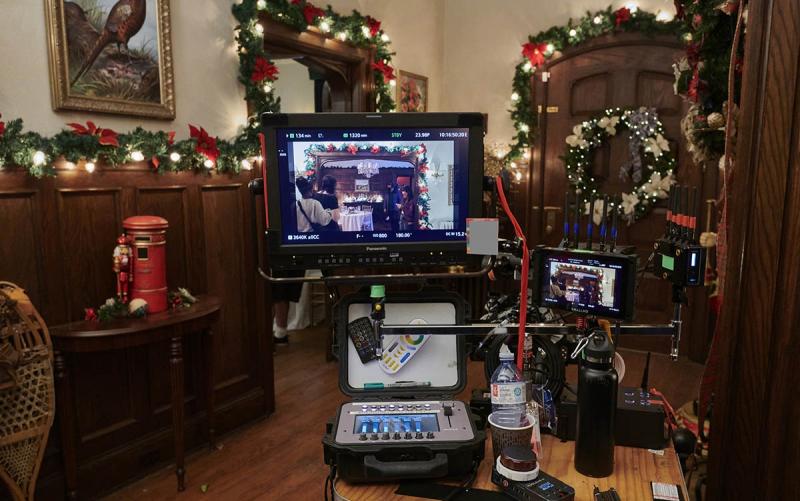
“Literally, we have trouble keeping film students in class,” said Jeremy Atherton, who coordinates Algonquin College’s Film and Media Production diploma program. “Once they get their work placements, the films want to pull them in and start working.”
Algonquin’s program, which was developed in 2019, in response to a growing gap between the number of productions in the city and available crew, gives students the skills to work in supporting roles on film sets.
The program includes a mandatory job placement of 150 hours. Most students end up working on low-budget thrillers or Hallmark-style Christmas movies, which are the most common kinds of live-action productions shot in Ottawa.
“Typically one of these movies… (takes) about 15 days to make… And then they crank out another one. That's the business model of it,” explained Atherton. “So we put a student on that and then they get to work in different departments, but they work together on that whole film from day one to day 15.”
The program currently admits 40 students each year; however, Atherton said Algonquin hopes to double that number in the next couple of years.
Another labour challenge unique to the National Capital Region is that it can be difficult for productions in Ottawa to bring in crews from Gatineau, and vice versa, due to differing tax credit systems between provinces, said Stephanie Davy, the senior manager of communications and operations for the OFO.
There are exceptions in other sectors, such as construction, that allow residents from Quebec and Ontario to do cross-border work, but they do not apply to the film industry as of yet.
Davy and the OFO have been looking at ways to have the local film industry qualify for a similar exception.
Despite the shortage of trained crews, Ottawa is not yet enough of a live-action powerhouse to attract big-budget productions, which means there are few jobs here for workers in certain film specialties, such as visual effects.
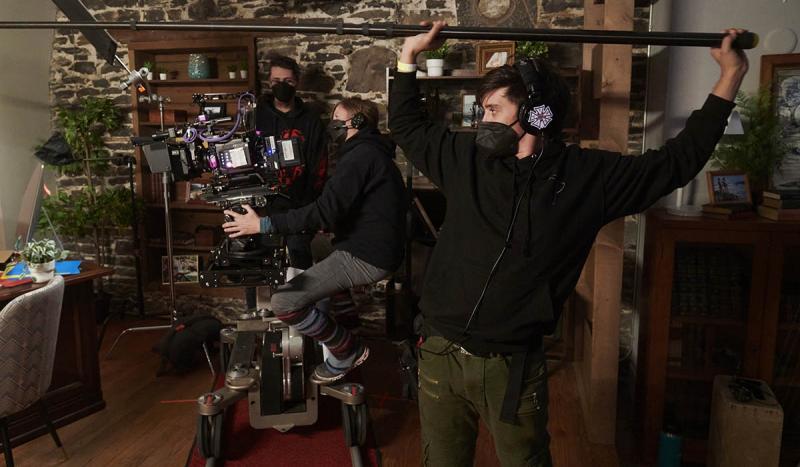
“Most of the people I know from Ottawa who are in the film industry have left Ottawa to go to Vancouver, Montreal, or Toronto, like me,” said Anna Goodman, who graduated from Carleton University’s Interactive Multimedia and Design Program in 2021. She now works as a layout artist at the Toronto office Rodeo FX, a visual effects company that has its headquarters in Montreal.
In her experience searching for jobs, visual effects jobs in Ottawa are few and far between, Goodman said.
“I'm sure there are some independent filmmakers in Ottawa, but (there is) zero visual effects work…” Goodman wrote in an email.
“Toronto, on the other hand, has big-budget shows and movies being filmed there, and a smattering of VFX companies who handle post-production,” she wrote, adding that there is “definitely a wider variety of job opportunities with both the production and the post-production steps being carried out in Toronto.”
However, there are some advantages to being a smaller city: the live-action film industry rebounded from COVID-19 shutdowns much more quickly in Ottawa than in Toronto. According to Toronto’s Department of Economic Development and Culture, spending on productions in the city dropped by over 30 per cent between 2019 and 2020, whereas in Ottawa, spending on live-action productions fell by less than 10 per cent due to COVID, according to the OFO.
Additionally, spending on productions between 2019 and 2021 rose by only 13 per cent in Toronto, compared with almost 60 per cent in Ottawa over the same period.
“We were one of the first jurisdictions to start production back up in Canada,” said Stephanie Davy.
“We did actually have a TV series that was shooting in Toronto and they did their third season in Ottawa because they couldn't start back up in Toronto just yet.”
As Ottawa attracts more and more out-of-town productions, the local filmmaking industry has also been growing, building a unique sense of community along the way.
One driving force of this growth is the Digital Arts Resource Centre (DARC), a non-profit run by and for independent artists that offers a variety of programs, courses and resources, including a small soundstage that can be rented at a government-subsidized rate.
The soundstage, which is located in the Morisset Library at the University of Ottawa, opened in September. It is reserved for independent filmmakers, explained Ludmylla Reis, who manages the facility.
At just 600 square feet, the DARC soundstage is not equipped to handle bigger productions. However, for a rental rate of $80 for one 12-hour day, it is a great resource for amateur filmmakers and creators looking for experience working with soundstages.
“Almost all of our funding comes from the regular funding bodies like municipal, federal and provincial (governments), which means we cannot support commercial work. We only support independent work, which means that as the creator, you own rights to what you are doing,” said Reis.
DARC also plans to use the space for training and partnerships with other organizations, she added.
The soundstage has already seen some use, particularly by local bands filming music videos.
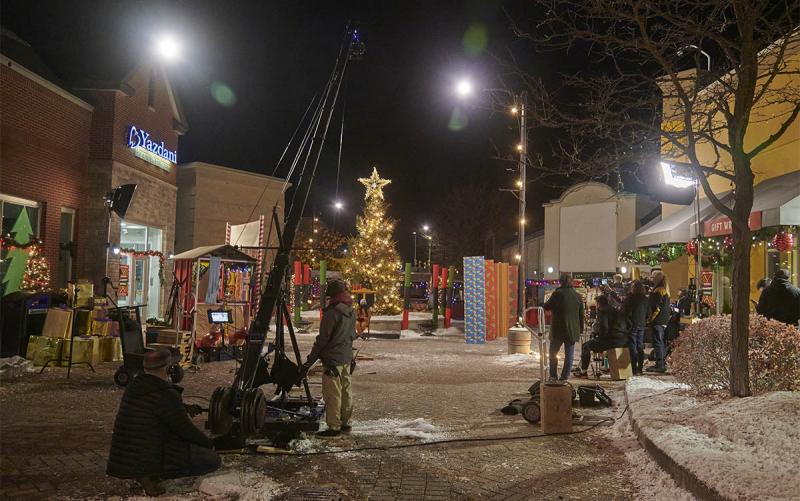
Organizations such as DARC and the Independent Filmmakers Co-operative of Ottawa, which provides local filmmakers with resources to realize their projects, have helped to create a supportive community, and to make Ottawa a desirable place for local filmmakers, such as Pixie Cram.
After graduating from Concordia University with a degree in theatre over two decades ago, Cram got some first-hand experience in film in Montreal, but soon realized that she didn’t want to spend her career on movie sets, where hours are long and mistreatment of crew members is commonplace. She decided to move back to her hometown of Ottawa, even though Montreal is a bustling centre for film productions.
Cram quickly found her footing in the local film and arts scene, making experimental and animated short films, mostly funded by government grants. Today Cram is producing, animating, directing and writing films in the city, while teaching a course on screenwriting at Carleton University. She is also working on a feature-length screenplay, which is in its early stages of development.
When she moved back to Ottawa, she joined the film co-op, and soon began learning new skills and making connections in the film community.
“They had all kinds of little micro-grants and programs I could take. So I took workshops. I learned how to shoot digital formats and how to do digital editing.”
“It was easy to get to know a community of people at the film co-op because you'd see the same people at events, the screenings and the workshops.”
With plans for a state-of-the-art soundstage in the city, a growing pool of trained workers for crews, and a thriving indie filmmaking scene, could Ottawa be poised for the big time?
Saint Sardos thinks it is. That’s why she said her heart was filled when she received the job offer from the OFO.
“I just felt like, wow. What a great challenge. What a great challenge to be part of that growth.”
Boshko Maric is is a third-year journalism and film studies student at Carleton University. He has written several articles for various publications, such as the Hip-Hop blog, G-Holy.com and Carleton’s weekly paper, The Charlatan.
ALL PHOTOS: Albert Camicioli, Ottawa Film Office



